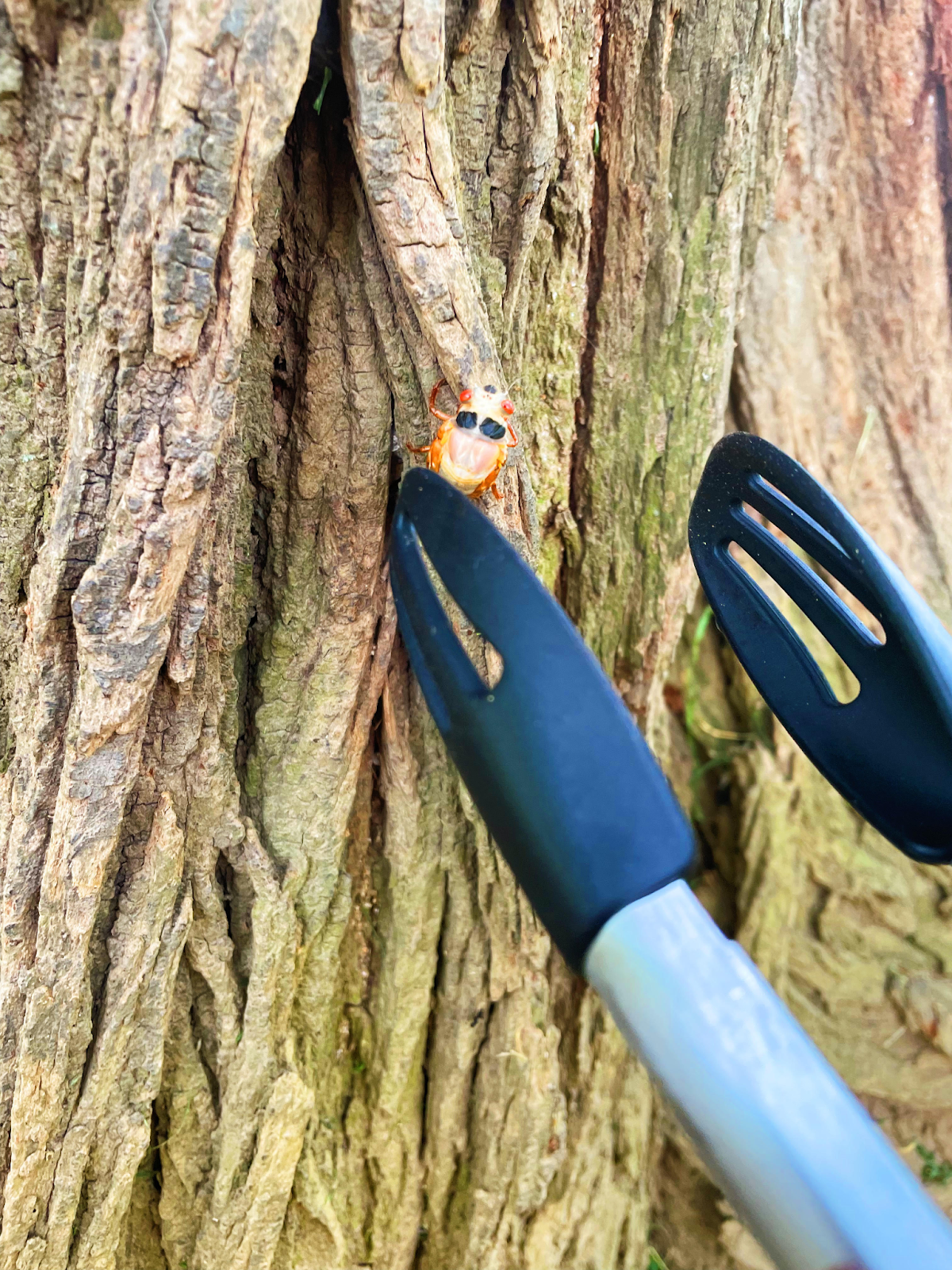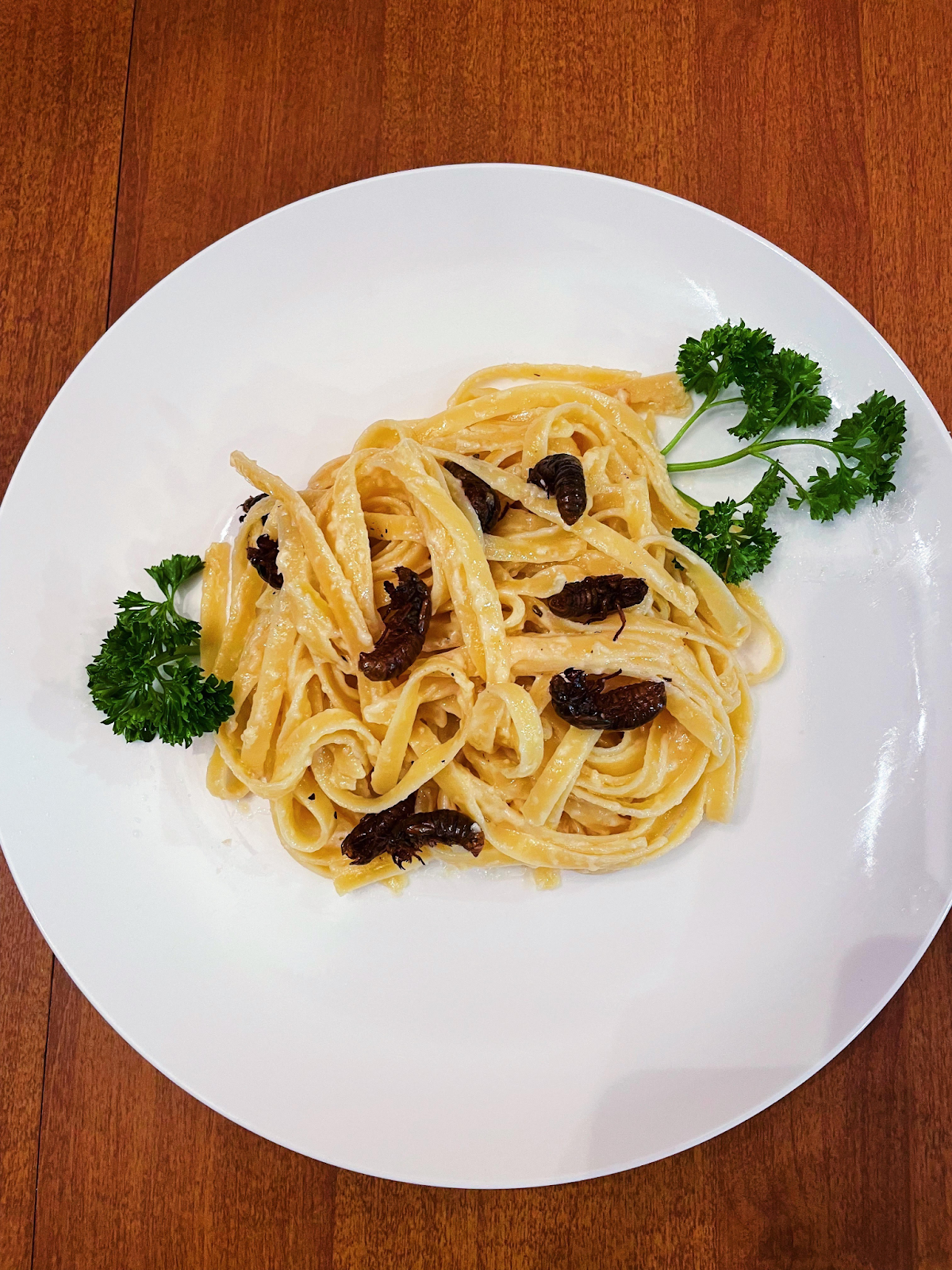For some reason, journalists really want you to eat bugs. You’ve probably seen an article like this from the New York Times or this from the New York Times or this from the New York Times or this from the New York Times and, well, you get the point. You can find countless such articles in mainstream publications, all encouraging Americans to eat insects as a way to help the environment. And these articles have only increased in quantity as Brood X has begun to overrun large parts of the eastern United States after 17 years underground. You’d think it was a no-brainer that you should be eschewing grocery stores the next few weeks and just grabbing cicadas off the ground for breakfast, lunch, and dinner.
For all the articles that advise eating bugs, very few of them are written by journalists who have actually done so. Could it be that these bug-eating advocates aren’t putting their money—or magicicada—where their mouth is? Insects for thee, but not for me? Here at The Dispatch, we’re dedicated to bringing you analysis grounded by reporting—and the question of whether you should eat cicadas is no different from anything else we cover. So, in the spirit of an enterprising journalist and a bored 5-year-old boy, I decided it was time for me to eat some bugs.
Part I: Cicada butt fungus isn’t covered by workman’s comp
To eat cicadas, one must first catch cicadas. That isn’t really much of a problem right now in Washington, D.C., where they’re currently as plentiful as summer interns. (The cicadas, at least, don’t stand on the wrong side of the Metro escalator.) But, complicating matters ever so slightly, you want to make sure you get a cicada when it’s good and ripe; their life cycle involves coming out of the ground and molting, and it’s immediately post-molt that you want your cicadas—if “want” is really the right word—as their new shells have not yet hardened. Complicating matters even more, it’s this life stage at which cicadas look their most disgusting. They’re small and pinkish white and maggoty, entirely unappetizing to the point that seeing them would make you second guess whether or not you actually want to do this.
Before setting out, I did my homework on how to kill and cook cicadas safely. From what I’ve read, the “humane” way to kill cicadas is to place them in the freezer for a few hours. You then want to blanch them in boiling water for 5 minutes, cooking their insides solid and making sure any nasty bacteria they may be carrying are killed off.
But even with proper blanching and further cooking, I still found myself more than slightly concerned about how safe this endeavor was going to be. My coworkers brought to my attention that Brood X cicadas are experiencing an epidemic of their own this year: About 5 percent of the cicadas have been infected by a fungus called Massospora cicadina that eats away at the cicadas, ultimately destroying the end of their abdomen and replacing it with spores that then spread the fungus to other cicadas as they attempt to mate. As someone who rather supports the idea of keeping his posterior intact, I had a natural interest in making sure the same wouldn’t happen to anyone who inadvertently ate an infected cicada—especially since my editor suggested that any injuries or illnesses sustained during the course of this article “would not be covered by workman’s comp.” So I reached out to Dr. Martha Weiss, a biology professor at Georgetown University and a bit of a cicada connoisseur, who assured me that my rear was safe.
“The fungus CANNOT infect humans—it’s specialized on cicadas—so it won’t even affect other insect species,” she said in an email. Weiss explained that it seems cicadas pick up fungal spores as they crawl out of their burrows, and then it takes awhile for the infection to take root, so if you’re eating cicadas you won’t even have to worry about spores ruining the taste.
“I think it’s safe to say that nymphs and tenerals (the newly emerged adults, white and soft, and perhaps the best stage to eat) will not have a fungus infection,” said Weiss.
Even if you come across an uninfected adult, Weiss says you probably wouldn’t want to eat it as adults are less meaty. But there’s something else interesting about these fungal-infected cicadas: They could (theoretically) get you high.
“The other interesting new curve ball is that the fungi produce amphetamines,” said Weiss. “Another species of fungus, in a different species of cicada, produces psilocybin (as in ‘magic mushrooms,’ and Massospora produces another compound called cathinone—the active substance in khat). We don’t know how it affects cicadas or humans, but it seems like you’d need to eat a LOT of infected cicadas to notice an effect.”

Part II: Cicadas à la Alec
I extended an invitation to anyone on staff who would like to join me in my culinary adventure and only Ryan Brown dared to accept.
(“I did not think three months into my new gig at The Dispatch I’d be eating cicadas, but here we are” — Ryan, upon completion of the last stage of his Dispatch hazing.)
After spending about half an hour picking cicadas off trees on the National Mall with tongs—getting some odd stares in the process and talking with one very amused little boy who told me he’d also been catching cicadas—I came home to prepare the meal. First up: a cicada charcuterie board.
After blanching the cicadas, I tossed them in olive oil and seasoned them lightly with salt and pepper. I then roasted them at 450 degrees for 10 minutes. To accompany them, I picked out a variety of cheeses—champagne cheddar, brie, manchego, and truffle gouda—and got some crackers, olives, and Grey Poupon (but of course). But one can’t have a charcuterie board without something to drink, so I opted to mix up a cocktail that seemed appropriate for the occasion: the cicada (a cousin to the grasshopper cocktail, both drinks named not for their ingredients but their coloration). Two ounces of bourbon, 1 ounce amaretto, half an ounce of light cream, and a third of an ounce of sugar syrup—a smooth, sweet drink ideal for cleansing the palate of residual bug flavor.
For our first taste I put a cicada on a Ritz cracker with gouda and some Grey Poupon. Ryan paired his with a Petits Toast and the champagne cheddar. We bit in and … were both underwhelmed. The other flavors at play dominated the experience, leaving us unsure what cicadas actually tasted like. So we decided to try plain cicadas. A bit of advice to those interested in following suit: It is a lot easier if you don’t look at the insect while you eat it. Ryan popped the whole thing in his mouth, but I made the mistake of looking at the cicada’s head and seeing its disgusting little eyes and face beforehand. I ended up just taking a bite of the lower half instead. Again, we were underwhelmed—it was light and crunchy and thanks to the seasoning it was a bit salty. But the bug itself didn’t seem to have a whole lot of flavor. Ryan’s thoughts: “I have to say, the cicadas themselves were not all that bad—I think the fact that they were seasoned and oven-roasted helped in that regard—but nonetheless they could have been way, way worse.”
In all, we both agreed the cocktail was much better.
Next up, cicadas fettuccine Alfredo. This recipe was the first I’d thought up when I decided to write this article. I’d seen some comparisons of cicadas to shellfish—in fact, it’s recommended you don’t eat cicadas if you have a shellfish allergy—and it seemed like a logical replacement for shrimp in the dish.
For the fettuccine: Simply follow whatever instructions there are on the box it comes in. (Unless you want to get really fancy and make the pasta from scratch, in which case I can’t help you.) Alfredo is an easy enough sauce to make at home: take a quarter cup of butter and melt it in a saucepan over low heat, add a cup of heavy cream, and let it simmer. Add one and a half cups of grated parmesan cheese, four or so cloves of minced garlic (you can’t go wrong with adding more), half a teaspoon of lemon juice, and whisk until you get a nice smooth consistency. Add a fourth of a cup of parsley and a dash of salt and pepper.
I roasted the cicadas for this again: toss them in olive oil, season them with salt and pepper and cook for 450 degrees for 10 minutes. Once all your ingredients are put together, combine and serve.

Resident Dispatch wine expert Steve Hayes recommended pairing the dish with a light wine with more acidity. “A good pinot noir if you’re doing them in fettuccine … or a sauvignon blanc to wash it down,” he said, in what is likely good advice that Ryan and I noticed he’d sent as we were sipping on a cabernet sauvignon. Neither of us knows about wine, so I have no idea if the cab was a smart choice. It tasted good though.
I enjoyed the cicadas fettuccine Alfredo more than the charcuterie dish—mainly because I just really like Alfredo sauce. The cicadas were, once again, hard to detect, leaving Ryan and me even further confused as to why these bugs were being so hyped up. Ryan put it well in saying, “We do not all need to be eating cicadas. There are plenty of other ways to get protein out there. I think anyone who thinks they may have missed out on the opportunity to eat the bugs this time and have to wait another 17 years, do not fret, you’re not missing much.”
Cicadas certainly don’t taste bad, but they don’t taste great either. It takes far more effort to collect them, kill them, and prepare them than it’s actually worth. Maybe in another 17 years other journos will work up the nerve to find that out themselves.








Please note that we at The Dispatch hold ourselves, our work, and our commenters to a higher standard than other places on the internet. We welcome comments that foster genuine debate or discussion—including comments critical of us or our work—but responses that include ad hominem attacks on fellow Dispatch members or are intended to stoke fear and anger may be moderated.